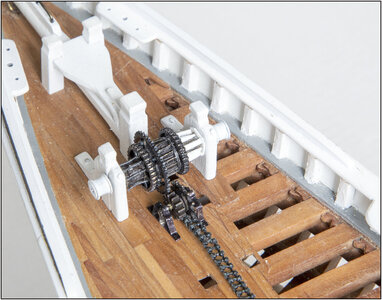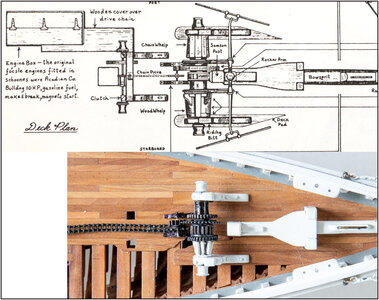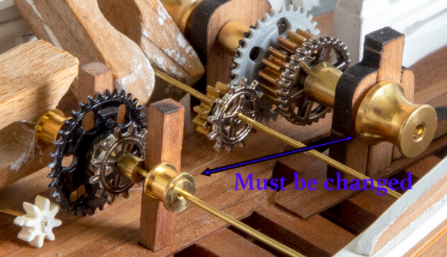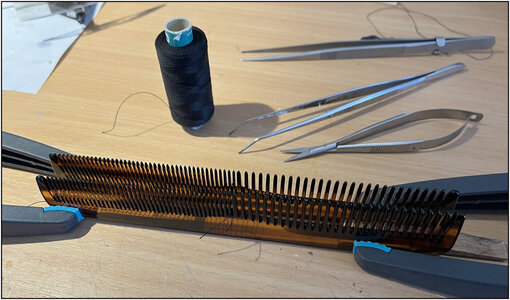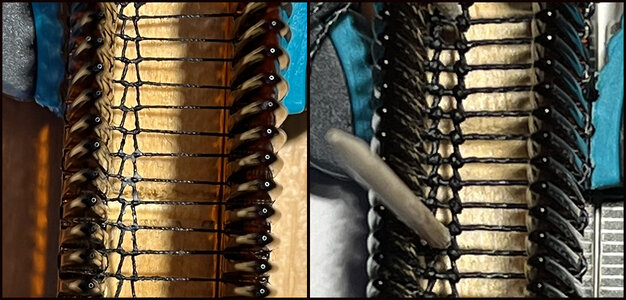After a lot of tweezing work, the third part is ready: the winch drive:
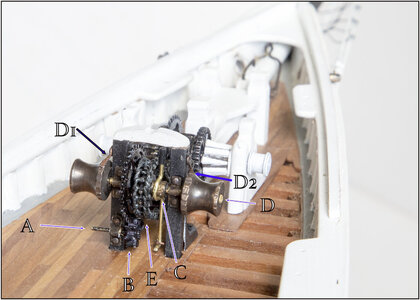
A = 1st axle that will be connected to the machine house later;
B = small gear on this axle is driving the large gear on 2nd axis 'D';
C = clutch that engages or disengages chain sprocket 'E'. Thus, the 2nd axis 'D' can also work separately. This allows heavy loads to be lifted;
D = 2nd axle with both barrels. The catches D1 and D2 engage on the teeth on both sides, depending on which direction of rotation is to be secured;
E = Chain sprocket with chain that provides the drive to the 3rd axle.
Both shafts are mounted in brass bushings over which naild brackets are attached.
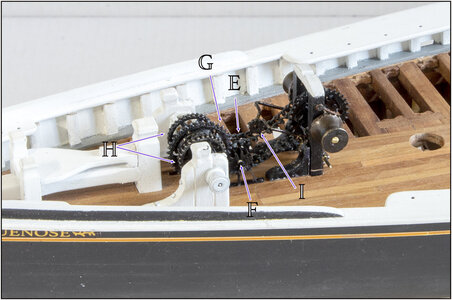
E = chain sprocket on the minor 3rd axle 'F'
F = the small gear on the shaft drives the large gear 'G' on the 4th shaft, the winch;
G = there are 2 decelerations, shaft 1 to shaft 2 as well as shaft 3 to shaft 4, which ensure that the windlass for the anchors, among other things, rotates slowly and can move large loads;
H = 2 gears on the winch that are connected to the braking system. That comes on the table for the samson.
I = tensioner on the drive chain.
The unforgivable macro shot:
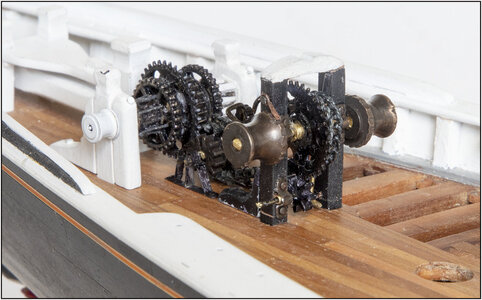
Keep in mind that the entire gear is just under 4.5 cm long / less then 2" ........
The whole on the bow:
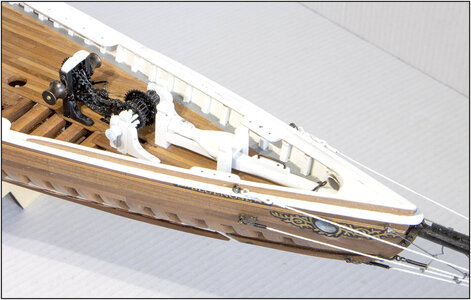
And one more from the front:
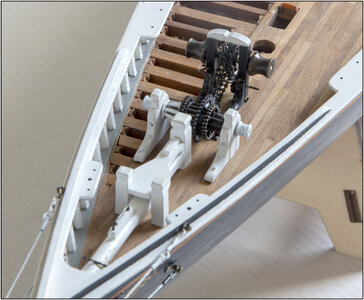
A complex past that has cost me a lot of thinking and improvisation, with the help of AL-FI.
Now the braking system that also needs to be completely scratched. And the catch on the samson and cover over the gears on axle 1 and 2.
Regards, Peter


